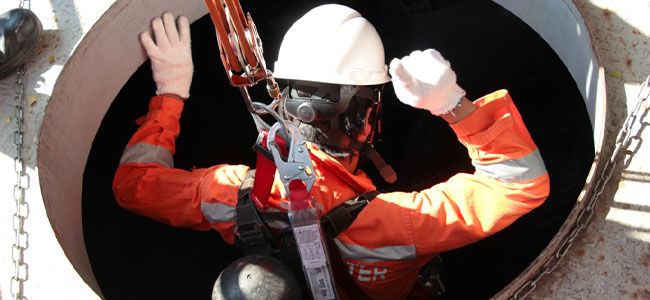
Navigating the Hidden Dangers of Confined Spaces
Understanding the invisible dangers and the critical importance of preparedness in confined work environments.
- By Omar Vikin
- Oct 11, 2023
Your workmate enters a confined space and collapses. What do you do? Most would follow their instinct and try to immediately rescue him. The problem is, would-be rescuers account for 60 percent of fatalities in confined spaces. The Bureau of Labor Statistics reports that 1,030 workers died in confined space incidents from 2011 to 2018.
According to Certified Safety Professional Mark Cangemi, Senior Technical Training Specialist at Honeywell, an overall lack of training and hazard recognition contributes to these risks. He adds, “The No. 1 cause of fatalities in confined spaces is preventable atmospheric hazards.” When a person collapses due to invisible hazards, the same dangers are present for those attempting a rescue, putting them at risk of succumbing to the same hazard as the initial victim.
The Occupational Safety & Health Administration (OSHA) defines confined space as any space that:
- Has limited or restricted means of entry or exit
- Is large enough for a person to enter to perform tasks
- Is not designed or configured for continuous occupancy
OSHA mandates testing the confined space atmosphere in this order:
- For oxygen
- For combustible gases
- For toxic gases and vapors
Examples of confined spaces include wind turbines, sewers, manholes, storm drains, crawl spaces, septic tanks, silos, vats, boilers, pumping/lifting stations, ducts, pipelines and more. They are located across numerous industries and may be encountered in virtually any occupation. The main reason workers enter confined spaces is to perform their work functions of routine maintenance, repairs, and inspections of the confined space.
Permit Spaces
If confined spaces are present on a worksite, the employer must have a competent person determine whether the confined spaces are “permit spaces.” A permit space has one or more of the following characteristics: (1) contains or has the potential to contain a hazardous atmosphere; (2) contains a material that has the potential for engulfing an entrant; (3) has an internal configuration such that an entrant could be trapped or asphyxiated by inwardly converging walls or by a floor which slopes downward and tapers to a smaller cross-section; or (4) contains any other recognized serious safety or health hazard.
This article originally appeared in the October 2023 issue of Occupational Health & Safety.